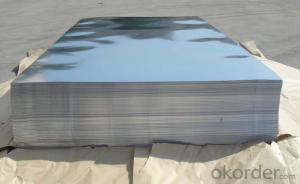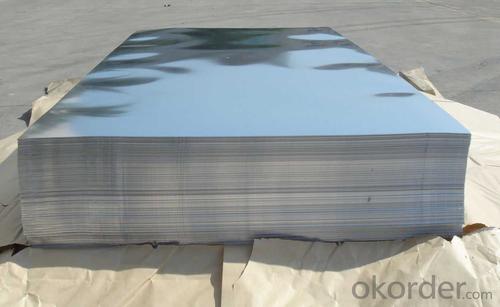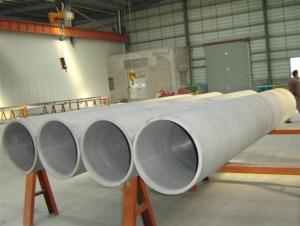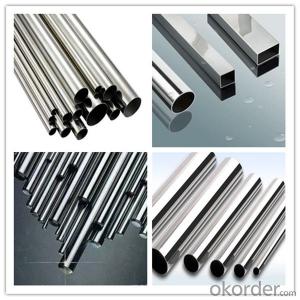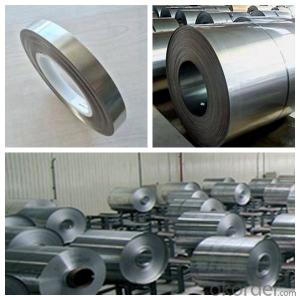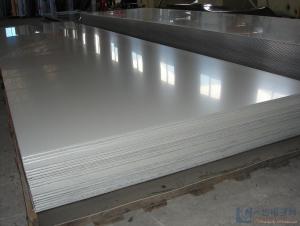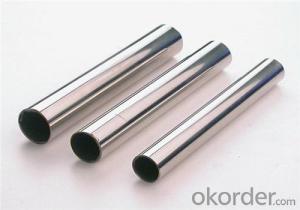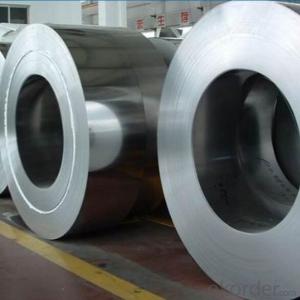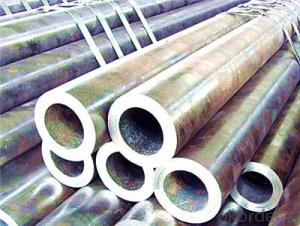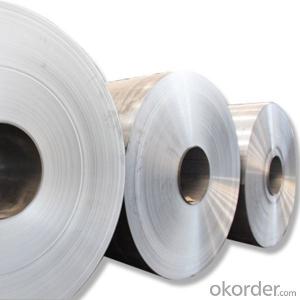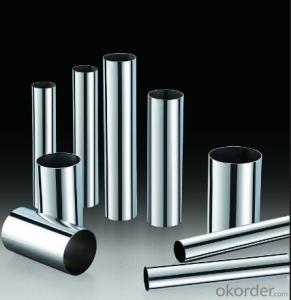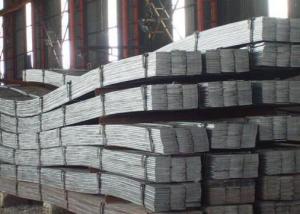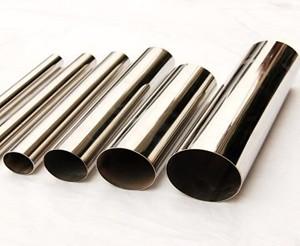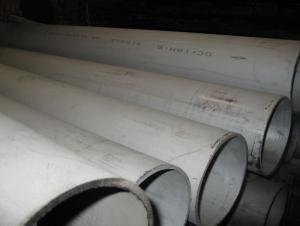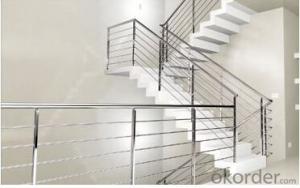304 stainless steel,stainless steel sheet,stainless steel plate in china
- Loading Port:
- Tianjin
- Payment Terms:
- TT OR LC
- Min Order Qty:
- 100 kg
- Supply Capability:
- 1000 kg/month
OKorder Service Pledge
Quality Product, Order Online Tracking, Timely Delivery
OKorder Financial Service
Credit Rating, Credit Services, Credit Purchasing
You Might Also Like

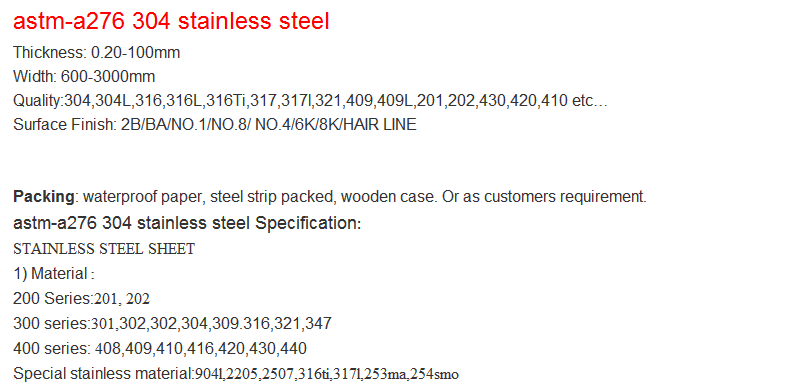

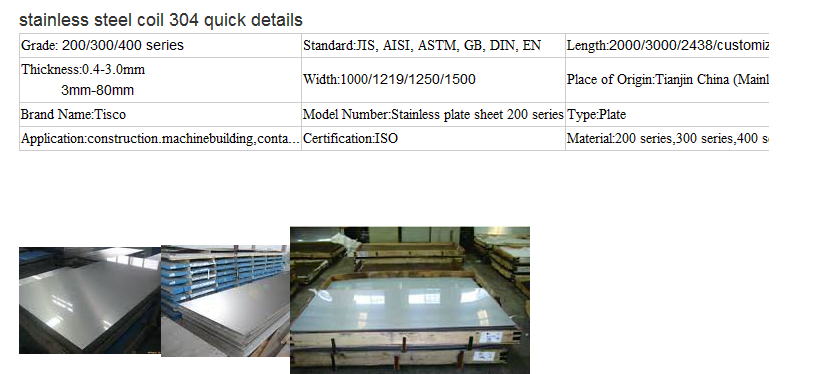
- Q: Can stainless steel pipes be welded?
- Indeed, it is possible to weld stainless steel pipes. Due to its remarkable resistance to corrosion and strength, stainless steel is widely favored in various industries. Among the numerous techniques employed to connect stainless steel pipes, welding is a prevalent approach. Nonetheless, it is crucial to employ suitable welding techniques and equipment to guarantee a successful weld. Each grade of stainless steel has distinct welding prerequisites, necessitating the use of a filler material that corresponds to the specific grade being welded. Furthermore, it is imperative to adequately clean and prepare the surfaces that are to be welded to ensure a robust and long-lasting joint.
- Q: Are stainless steel pipes recyclable?
- Yes, stainless steel pipes are recyclable. Stainless steel is a highly sustainable material that can be recycled indefinitely without losing its properties. Stainless steel pipes can be melted down and transformed into new stainless steel products, making them a valuable resource in the recycling industry. The recycling process for stainless steel pipes involves collecting and sorting the pipes, melting them down in a furnace, and then forming them into new products. Recycling stainless steel pipes not only conserves natural resources but also reduces energy consumption and greenhouse gas emissions associated with the production of new stainless steel.
- Q: What is the difference between the stainless steel tube and tube rolling
- Stainless steel stands for material. According to the production process, steel pipe, sub welded pipe, hot rolled pipe, cold rolled pipe and cold drawn pipe. What you say should refers to the cold drawn pipe drawing. Pipe called cold drawn, round steel called cold drawn. Compared with these processes, cold drawing and cold rolling are close to each other. The accuracy is higher, because of the plastic deformation, the mechanical properties are better. The specific difference is that the cold rolling is less than the cold drawn processing track, the accuracy and surface roughness are higher, and the processing cost is high. Cold drawing hardness is high, processing cost is low, processing will be wasted.
- Q: Can stainless steel pipes be used for solar water heating systems?
- Stainless steel pipes, indeed, have the capability to serve in solar water heating systems. The reason behind this popularity lies in the durability, corrosion resistance, and high-temperature endurance exhibited by stainless steel. Its suitability for enduring the challenging outdoor circumstances and constant exposure to sunlight encountered by solar water heating systems is noteworthy. Moreover, stainless steel pipes are renowned for their long-lasting nature, rendering them a perfect option for prolonged utilization in solar water heating systems. All in all, stainless steel pipes provide exceptional performance and reliability for solar water heating systems.
- Q: How do you calculate the maximum allowable span for stainless steel pipes?
- The maximum allowable span for stainless steel pipes can be calculated by considering various factors such as the material's tensile strength, the pipe's diameter, wall thickness, and the type of support or loading conditions. By using engineering formulas and standards specific to stainless steel pipes, such as those provided by ASME B31.1 or ASME B31.3, one can determine the maximum span that ensures structural integrity and safety.
- Q: What is the difference between seamless and electric resistance welded stainless steel pipes?
- The main difference between seamless and electric resistance welded stainless steel pipes lies in the manufacturing process. Seamless pipes are made from a solid stainless steel billet, which is heated and then stretched over a series of mandrels to create the desired shape and size. This process ensures a uniform and continuous structure without any welds. On the other hand, electric resistance welded pipes are made by forming flat stainless steel sheets into a cylindrical shape and then welding the edges together using an electric current. This results in a visible seam along the length of the pipe. While both types of pipes have their advantages and uses, seamless pipes are generally considered to have superior strength, corrosion resistance, and a smoother interior surface, making them suitable for applications where durability and cleanliness are crucial.
- Q: Are stainless steel pipes suitable for brewery applications?
- Yes, stainless steel pipes are highly suitable for brewery applications. Stainless steel is corrosion-resistant, ensuring that the pipes can withstand the harsh chemicals and acids used in the brewing process. It is also easy to clean and maintain, making it ideal for maintaining the hygiene standards required in breweries. Additionally, stainless steel pipes do not impart any taste or odor to the beer, ensuring the quality and purity of the final product.
- Q: Can stainless steel pipes be etched?
- Yes, stainless steel pipes can be etched. Etching is a common method used to create intricate designs or markings on stainless steel surfaces.
- Q: What is the weight of stainless steel pipes?
- The weight of stainless steel pipes can vary depending on the size, thickness, and length of the pipes. It is important to consider these factors in order to determine the exact weight of stainless steel pipes.
- Q: Are stainless steel pipes suitable for pharmaceutical applications?
- Yes, stainless steel pipes are highly suitable for pharmaceutical applications. Stainless steel is a corrosion-resistant material that meets the strict hygiene and cleanliness requirements of the pharmaceutical industry. It is non-reactive, easy to clean, and has excellent resistance to chemicals, making it ideal for transporting pharmaceutical products safely and maintaining their integrity. Additionally, stainless steel pipes can withstand high temperatures and pressures, ensuring the efficiency and reliability of pharmaceutical processes.
Send your message to us
304 stainless steel,stainless steel sheet,stainless steel plate in china
- Loading Port:
- Tianjin
- Payment Terms:
- TT OR LC
- Min Order Qty:
- 100 kg
- Supply Capability:
- 1000 kg/month
OKorder Service Pledge
Quality Product, Order Online Tracking, Timely Delivery
OKorder Financial Service
Credit Rating, Credit Services, Credit Purchasing
Similar products
Hot products
Hot Searches
Related keywords
